Category
Popular Articles
- AI (12)
- Android (38)
- App Suggest (4)
- Apple (15)
- Apple TV (2)
- Bluetooth (3)
- Cars (2)
- ChatGpt (1)
- Chrome (2)
- Did you know? (1)
- E-Commerce News (1)
- Ecommerce Websites business (7)
- Electronics Shopping (5)
- Fashion Tips (3)
- Gaming (4)
- Google Gemini (3)
- Hair Care Tips (2)
- How to (13)
- iCloud (1)
- Infotainment System (1)
- Iphone (101)
- Job Posting (1)
- Lifestyle (3)
- Mac (20)
- Mobile Games (1)
- Netflix (1)
- Online Shopping Websites (2)
- Personal Finance Management (3)
- Product Reviews (3)
- Roku TV (4)
- Samsung (9)
- Shopping Tips (10)
- Spotify (1)
- Tech (92)
- Windows 11 (18)
- Zero Waste (3)
Discounted Products
-
 Leo Creation 144 TC Cotton Double Jaipuri Prints Flat Bedsheet(Pack of 1, Blue, Gree, Red, Grey, Light Grey)
Leo Creation 144 TC Cotton Double Jaipuri Prints Flat Bedsheet(Pack of 1, Blue, Gree, Red, Grey, Light Grey)
₹2,999.00Original price was: ₹2,999.00.₹329.00Current price is: ₹329.00. -
 Home Garage 210 TC Cotton King Floral Fitted (Elastic) Bedsheet(Pack of 1, Grey)
Home Garage 210 TC Cotton King Floral Fitted (Elastic) Bedsheet(Pack of 1, Grey)
₹999.00Original price was: ₹999.00.₹299.00Current price is: ₹299.00. -
 Goodrik 140 TC Cotton Double 3D Printed Flat Bedsheet(Pack of 1, Brown)
Goodrik 140 TC Cotton Double 3D Printed Flat Bedsheet(Pack of 1, Brown)
₹499.00Original price was: ₹499.00.₹229.00Current price is: ₹229.00. -
 GLOBALSHOP 350 TC Microfiber Double Floral Flat Bedsheet(Pack of 1, Multicolor)
GLOBALSHOP 350 TC Microfiber Double Floral Flat Bedsheet(Pack of 1, Multicolor)
₹1,250.00Original price was: ₹1,250.00.₹263.00Current price is: ₹263.00. -
 RisingStar 250 TC Microfiber King Printed Fitted (Elastic) Bedsheet(Pack of 1, FITTED-ROUND-CIRCLES-PREMIUM)
RisingStar 250 TC Microfiber King Printed Fitted (Elastic) Bedsheet(Pack of 1, FITTED-ROUND-CIRCLES-PREMIUM)
₹2,299.00Original price was: ₹2,299.00.₹299.00Current price is: ₹299.00. -
 Home Garage 210 TC Cotton King Floral Fitted (Elastic) Bedsheet(Pack of 1, Fitted Black Green)
Home Garage 210 TC Cotton King Floral Fitted (Elastic) Bedsheet(Pack of 1, Fitted Black Green)
₹1,299.00Original price was: ₹1,299.00.₹299.00Current price is: ₹299.00. -
 Home Garage 180 TC Cotton King 3D Printed Flat Bedsheet(Pack of 1, White)
Home Garage 180 TC Cotton King 3D Printed Flat Bedsheet(Pack of 1, White)
₹999.00Original price was: ₹999.00.₹229.00Current price is: ₹229.00. -
 Home Sizzler 153 cm (5 ft) Polyester Room Darkening Window Curtain (Pack Of 2)(Floral, Maroon)
Home Sizzler 153 cm (5 ft) Polyester Room Darkening Window Curtain (Pack Of 2)(Floral, Maroon)
₹799.00Original price was: ₹799.00.₹299.00Current price is: ₹299.00. -
 Panipat Textile Hub 152.4 cm (5 ft) Polyester Window Curtain (Pack Of 2)(Solid, Aqua)
Panipat Textile Hub 152.4 cm (5 ft) Polyester Window Curtain (Pack Of 2)(Solid, Aqua)
₹1,899.00Original price was: ₹1,899.00.₹299.00Current price is: ₹299.00. -
 Home Sizzler 214 cm (7 ft) Polyester Semi Transparent Door Curtain (Pack Of 2)(Floral, Maroon)
Home Sizzler 214 cm (7 ft) Polyester Semi Transparent Door Curtain (Pack Of 2)(Floral, Maroon)
₹1,199.00Original price was: ₹1,199.00.₹399.00Current price is: ₹399.00. -
 Home Sizzler 153 cm (5 ft) Polyester Room Darkening Window Curtain (Pack Of 2)(Floral, Brown)
Home Sizzler 153 cm (5 ft) Polyester Room Darkening Window Curtain (Pack Of 2)(Floral, Brown)
₹799.00Original price was: ₹799.00.₹299.00Current price is: ₹299.00. -
 Stella Creations 214 cm (7 ft) Polyester Room Darkening Door Curtain (Pack Of 2)(Abstract, Brown)
Stella Creations 214 cm (7 ft) Polyester Room Darkening Door Curtain (Pack Of 2)(Abstract, Brown)
₹1,299.00Original price was: ₹1,299.00.₹449.00Current price is: ₹449.00. -
 Homefab India 152.5 cm (5 ft) Polyester Room Darkening Window Curtain (Pack Of 2)(Floral, Light Blue)
Homefab India 152.5 cm (5 ft) Polyester Room Darkening Window Curtain (Pack Of 2)(Floral, Light Blue)
₹1,199.00Original price was: ₹1,199.00.₹319.00Current price is: ₹319.00. -
 Urban Home 214 cm (7 ft) PVC Transparent Door Curtain Single Curtain(Solid, Off White)
Urban Home 214 cm (7 ft) PVC Transparent Door Curtain Single Curtain(Solid, Off White)
₹699.00Original price was: ₹699.00.₹203.00Current price is: ₹203.00. -
 Panipat Textile Hub 213 cm (7 ft) Polyester Door Curtain (Pack Of 2)(Solid, Brown)
Panipat Textile Hub 213 cm (7 ft) Polyester Door Curtain (Pack Of 2)(Solid, Brown)
₹1,199.00Original price was: ₹1,199.00.₹349.00Current price is: ₹349.00.
Affiliate Links
Promotion
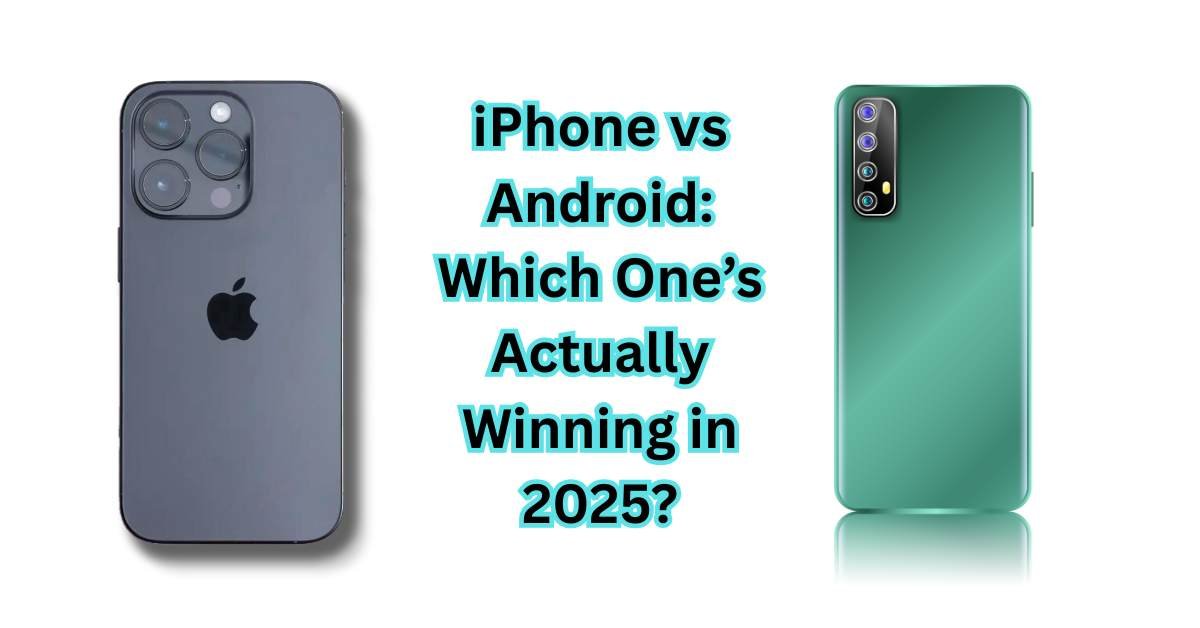
Hi friends, Jessica here! As a tech-loving mom who uses my phone for everything from grocery lists to remote work meetings (and yes, sneaking in some mom-TikToks), I’ve been paying attention to the iPhone vs Android debate more than ever. Especially after Apple’s recent hardware refresh, I wanted to take a look—on feature level, market share, and real-life user feelings—to figure out who’s coming out on top in 2025. Spoiler: It depends on how you measure “winning.”
Market Share: Global vs. U.S.
Globally, Android still comfortably leads—around 70–72% of devices run Android, while iOS hovers near 27–29%. That means if you live outside the U.S., Android is likely what most people are using.
But when we focus on the U.S., things flip: iPhone leads with about 57–59% of the U.S. smartphone market, with Android on the other side around 40–42%. That’s a strong base.
So, “winning” depends a lot on where you are. Android wins globally by sheer numbers; iPhone wins in the U.S. by influence, revenue, and loyalty.
Revenue & User Spending
Here’s where iPhone pulls ahead. Despite fewer users overall globally, iPhone’s App Store generates more revenue than Google Play—because iPhone users spend more per person.
In some reports, iPhone users are also spending more on tech and fashion, suggesting they have higher disposable income on average.
So from a revenue and economic influence standpoint? iPhone is definitely winning in 2025.
Loyalty & Ecosystem
If there’s one thing I’ve noticed among my colleagues, mom friends, and social circle, it’s the feeling of being “locked in” if you go with Apple. Between iMessage, FaceTime, AirPods, Apple Watch, and seamless device hand-off, once people go iPhone, many stick with it. Survey after survey confirms: iPhone users show 90%+ loyalty, higher than Android in many cases.
Android wins on variety and choice—tons of brands, price points, hardware variety. But that variety can sometimes mean inconsistent quality or delayed updates. iPhones tend to be more predictable year over year in terms of software support and resale value.
Feature Wars: What’s New & Who Has the Edge
Apple’s 2025 Strengths
- The iPhone 17 line brought ProMotion screens to non-Pro models, brighter displays (~3,000 nits), better durability (Ceramic Shield 2), and larger base storage.
- Features like Center Stage (in front camera), wireless improvements (WiFi-7, Bluetooth enhancements), and thoughtful battery life tweaks.
Where Android Still Shines
- Android manufacturers often lead in AI integration at a system level—like Google’s Gemini assistant getting proactive, conversational context, live translation, etc. iPhone is working on these but critics say many promised features aren’t fully delivered yet.
- Hardware variety—foldables, different sizes and shapes, pricing from budget to flagship. If you want choice, Android has far more.
Regional Trends & Cultural Influence
In the U.S., iPhones carry a certain status among teens and urban users. It’s not just a phone—it’s part of their identity. That means influence is huge.
Globally, especially in price-sensitive countries, Android wins—in India, Southeast Asia, Africa—because of lower cost options and more brands competing.
Downsides on Both Sides
iPhone
- Some features announced by Apple are still catching up. Siri and “Apple Intelligence” are tipped to improve, but currently lag behind what Google offers in AI assistance.
- Less hardware diversity; higher prices for flagship and Pro models.
- Some design choices are being critiqued—for example, recent changes to camera module aesthetics drew criticism.
Android
- Fragmented software experience—updates aren’t always timely across all brands.
- Too many low end, cheap models that lag in quality, which damages the reputation.
- AI features are often uneven; hardware + software synergy can vary by brand.
Which One’s “Winning” for What Kinds of People
Here’s how I see it for moms, creators, professionals, families—whatever your day looks like:
- If you care about premium build, resale value, seamless ecosystem (watch, AirPods, Mac) → iPhone is likely the better long-term choice.
- If you want customization, choice, or budget-friendly options, Android gives you plenty of power without Apple prices.
- If AI assistant and on-device intelligence matter to you every day, Android (Google/Pixel especially) is currently pulling ahead, though Apple is catching up.
- If stability and support matter—software updates, security—you’ll generally get more consistent support with iPhone.
Final Thoughts
So, is iPhone or Android “actually winning” in 2025?
- Globally, Android wins by market share.
- Now, in the U.S. and among revenue, ecosystem loyalty, and premium value, iPhone is probably winning.
- But “winning” means what you care about: affordability, features, AI, design, ecosystem, or user experience.
For me, as a mom who wants something that just works, stays secure, integrates with my laptop and watch, and looks good doing it—I lean iPhone. But I see why many of my friends love Android, especially when price and variety are top priorities.
Written by Bazaronweb
Latest Tech Articles
- 5 Ways to Backup and Restore Registry Settings in Windows

- iMessage Not Syncing Between iPhone & Mac? 8 Proven Ways to Fix Account & Device Issues
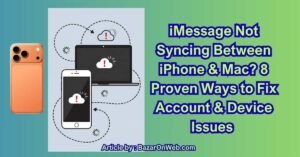
- Outlook Not Receiving Emails? 8 Proven Fixes for Windows, Mac & Mobile

- Zoom Not Connecting? 7 Ways to Fix Meeting Join Errors on Windows & Mac

- Microsoft Teams Not Opening? 5 Proven Fixes to Restart Your Workspace

Products
-
![Apple Watch Ultra 3 [GPS + Cellular 49mm] Running & Multisport Smartwatch w/Rugged Titanium Case w/Black Titanium Milanese Loop - M. Satellite Communications, Advanced Health & Fitness Tracking](https://bazaronweb.com/retailstores/wp-content/uploads/2025/09/apple-watch-320x320.jpg) Apple Watch Ultra 3 [GPS + Cellular 49mm] Running & Multisport Smartwatch w/Rugged Titanium Case w/Black Titanium Milanese Loop - M. Satellite Communications, Advanced Health & Fitness Tracking
Apple Watch Ultra 3 [GPS + Cellular 49mm] Running & Multisport Smartwatch w/Rugged Titanium Case w/Black Titanium Milanese Loop - M. Satellite Communications, Advanced Health & Fitness Tracking
-
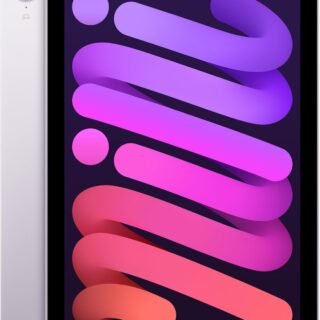 Apple iPad mini (A17 Pro): Apple Intelligence, 8.3-inch Liquid Retina Display, 256GB, Wi-Fi 6E, 12MP Front/12MP Back Camera, Touch ID, All-Day Battery Life — Purple
Apple iPad mini (A17 Pro): Apple Intelligence, 8.3-inch Liquid Retina Display, 256GB, Wi-Fi 6E, 12MP Front/12MP Back Camera, Touch ID, All-Day Battery Life — Purple
-
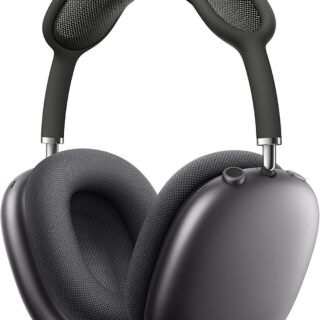 Apple AirPods Max Wireless Over-Ear Headphones, Active Noise Cancelling, Transparency Mode, Personalized Spatial Audio, Dolby Atmos, Bluetooth Headphones for iPhone – Space Gray
Apple AirPods Max Wireless Over-Ear Headphones, Active Noise Cancelling, Transparency Mode, Personalized Spatial Audio, Dolby Atmos, Bluetooth Headphones for iPhone – Space Gray
-
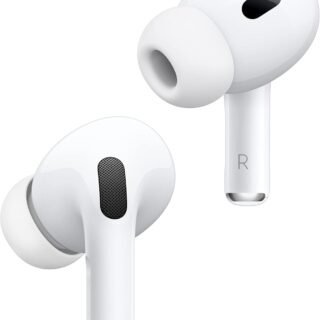 Apple AirPods Pro 2 Wireless Earbuds, Active Noise Cancellation, Hearing Aid Feature, Bluetooth Headphones, Transparency, Personalized Spatial Audio, High-Fidelity Sound, H2 Chip, USB-C Charging
Apple AirPods Pro 2 Wireless Earbuds, Active Noise Cancellation, Hearing Aid Feature, Bluetooth Headphones, Transparency, Personalized Spatial Audio, High-Fidelity Sound, H2 Chip, USB-C Charging
-
 Leo Creation 144 TC Cotton Double Jaipuri Prints Flat Bedsheet(Pack of 1, Blue, Gree, Red, Grey, Light Grey)
Leo Creation 144 TC Cotton Double Jaipuri Prints Flat Bedsheet(Pack of 1, Blue, Gree, Red, Grey, Light Grey)
₹2,999.00Original price was: ₹2,999.00.₹329.00Current price is: ₹329.00.
Leave a Reply